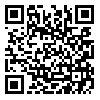Volume 22, Issue 158 (2025)
FSCT 2025, 22(158): 185-200 |
Back to browse issues page
Download citation:
BibTeX | RIS | EndNote | Medlars | ProCite | Reference Manager | RefWorks
Send citation to:



BibTeX | RIS | EndNote | Medlars | ProCite | Reference Manager | RefWorks
Send citation to:
Taheri F, Sadeghi A, Jafari S M, Shahryari S, Zarali M. Evaluation of probiotic and antifungal properties of predominant yeast isolated from honey. FSCT 2025; 22 (158) :185-200
URL: http://fsct.modares.ac.ir/article-7-75965-en.html
URL: http://fsct.modares.ac.ir/article-7-75965-en.html
1- Department of Food Science and Technology, Gorgan University of Agricultural Sciences and Natural Resources, Gorgan, Iran.
2- Department of Food Science and Technology, Gorgan University of Agricultural Sciences and Natural Resources, Gorgan, Iran. ,sadeghi.gau@gmail.com
2- Department of Food Science and Technology, Gorgan University of Agricultural Sciences and Natural Resources, Gorgan, Iran. ,
Abstract: (203 Views)
Evaluation of probiotic properties of microorganisms isolated from stressful substrates has received considerable attention. Among probiotic microorganisms, yeasts are distinguished from lactic acid bacteria due to their bigger size, better adhesion ability, and resistance to antibiotics without the possibility of transferring resistance genes. In the present study, probiotic and antifungal properties of the predominant yeast isolated from natural honey were investigated. Sequencing results of the PCR products led to the identification of Saccharomyces cerevisiae as the predominant yeast isolated from honey. Moreover, the isolate had no hemolytic activity and showed the highest sensitivity towards natamycin among the studied antimycotic agents. In addition, although the yeast isolate had no proper survival under simulated gastrointestinal conditions, it had relatively high auto-aggregation (93.86%) and cell-surface hydrophobicity (76.36%). The highest co-aggregation ability of the isolate was also observed with Gram-positive bacteria Bacillus cereus and Staphylococcus aureus, and the inhibition activity of the isolate against B. cereus was significantly (p<0.05) higher than those of the other studied food-borne bacteria. The yeast isolate also showed 32.18% antifungal effect on Aspergillus flavus. Accordingly, the predominant yeast isolated from honey has suitable capabilities for application as a protective culture in fermentation industries.
Keywords: Natural honey, probiotic yeast, adhesion capacity, antibacterial effect, antifungal activity.
Article Type: Original Research |
Subject:
Food Microbiology
Received: 2024/07/6 | Accepted: 2024/10/28 | Published: 2025/03/21
Received: 2024/07/6 | Accepted: 2024/10/28 | Published: 2025/03/21
Send email to the article author
| Rights and permissions | |
 |
This work is licensed under a Creative Commons Attribution-NonCommercial 4.0 International License. |







